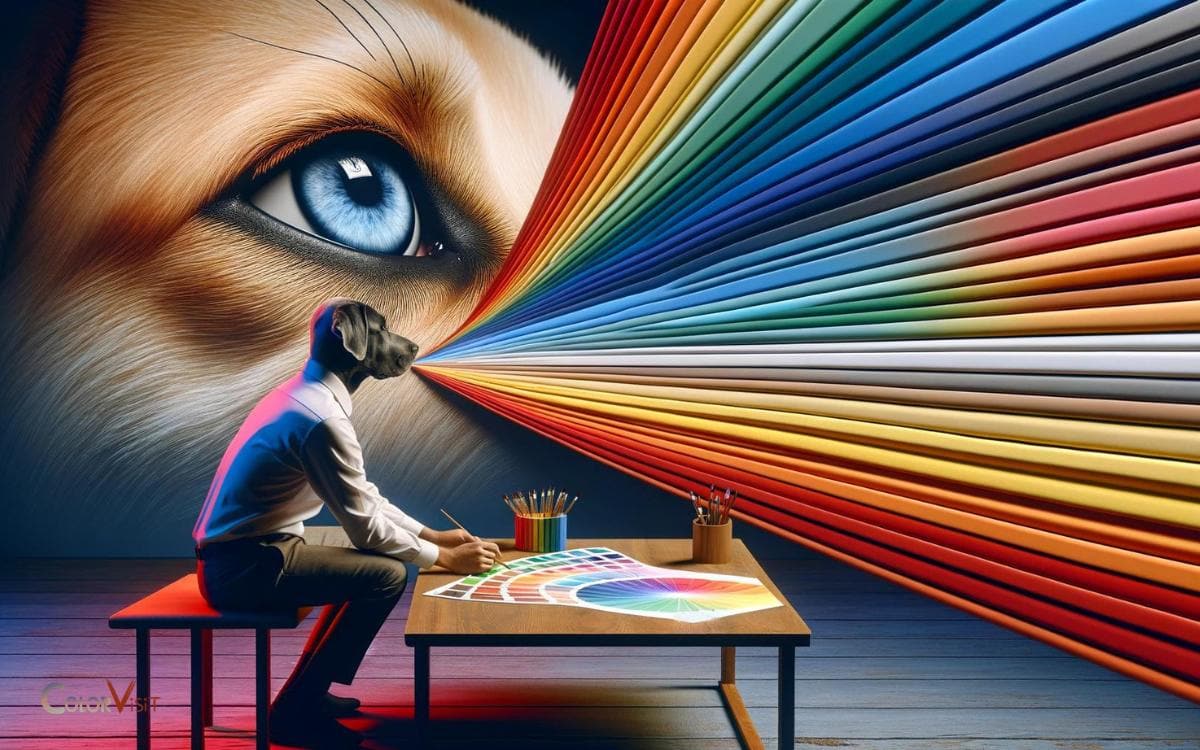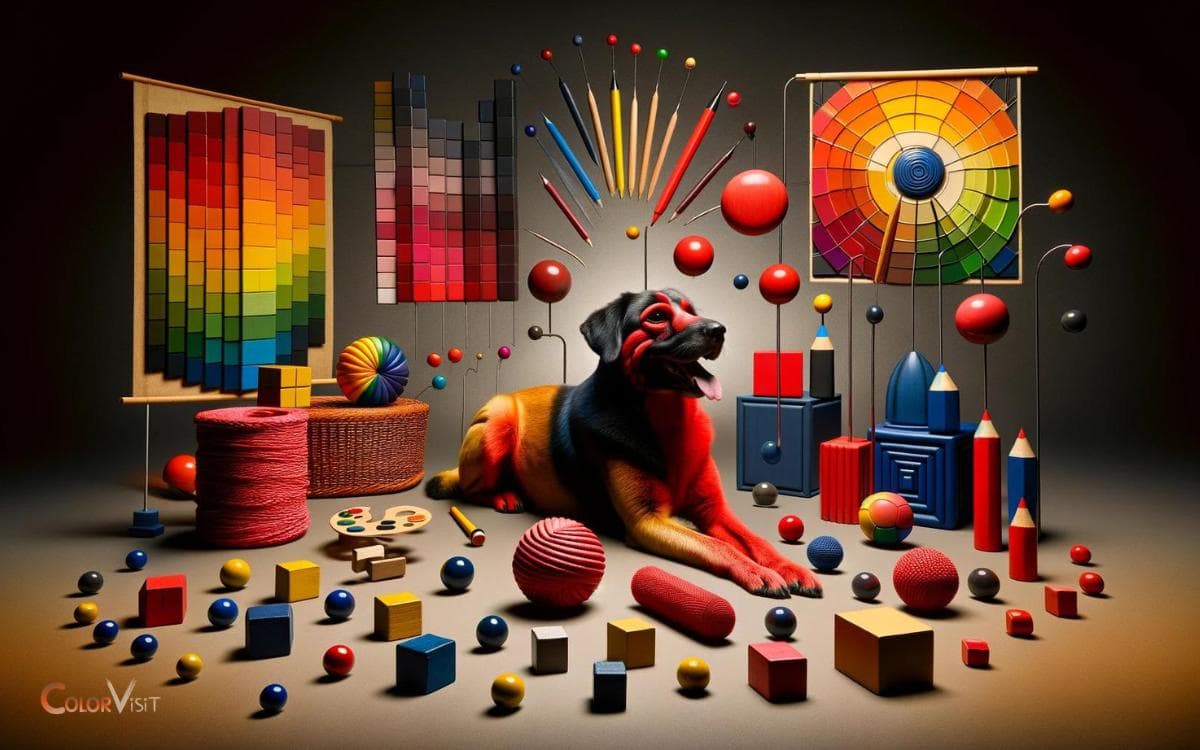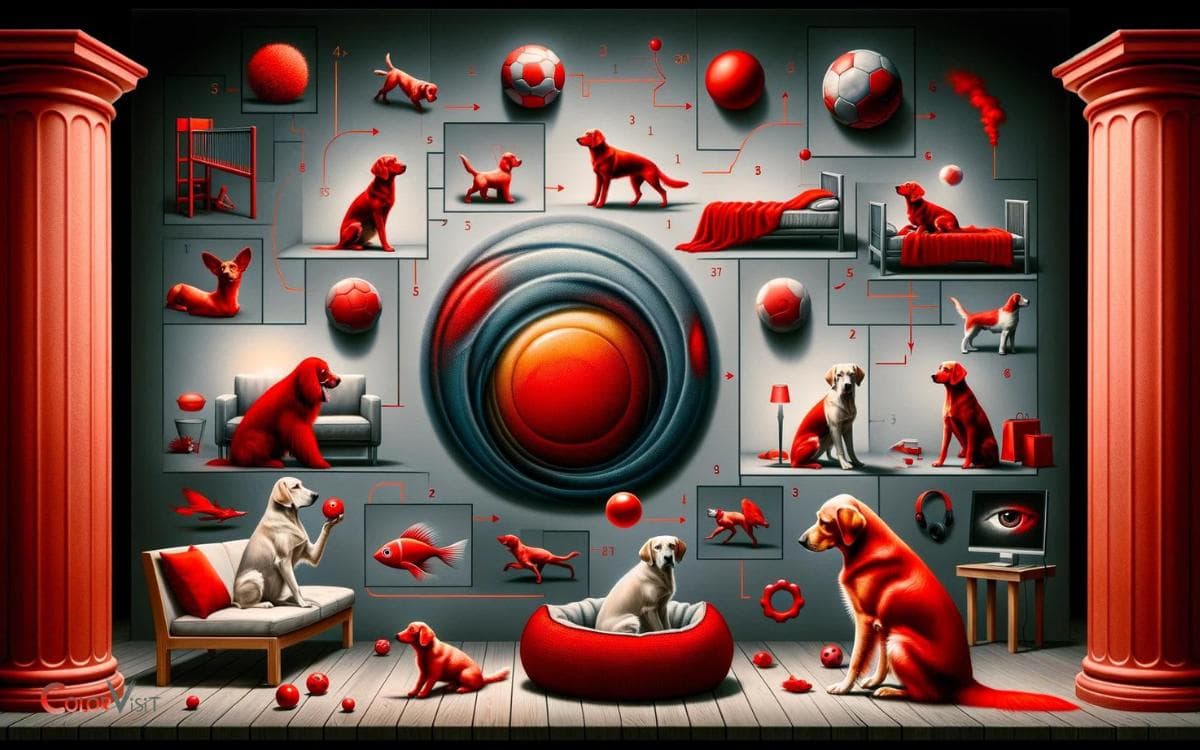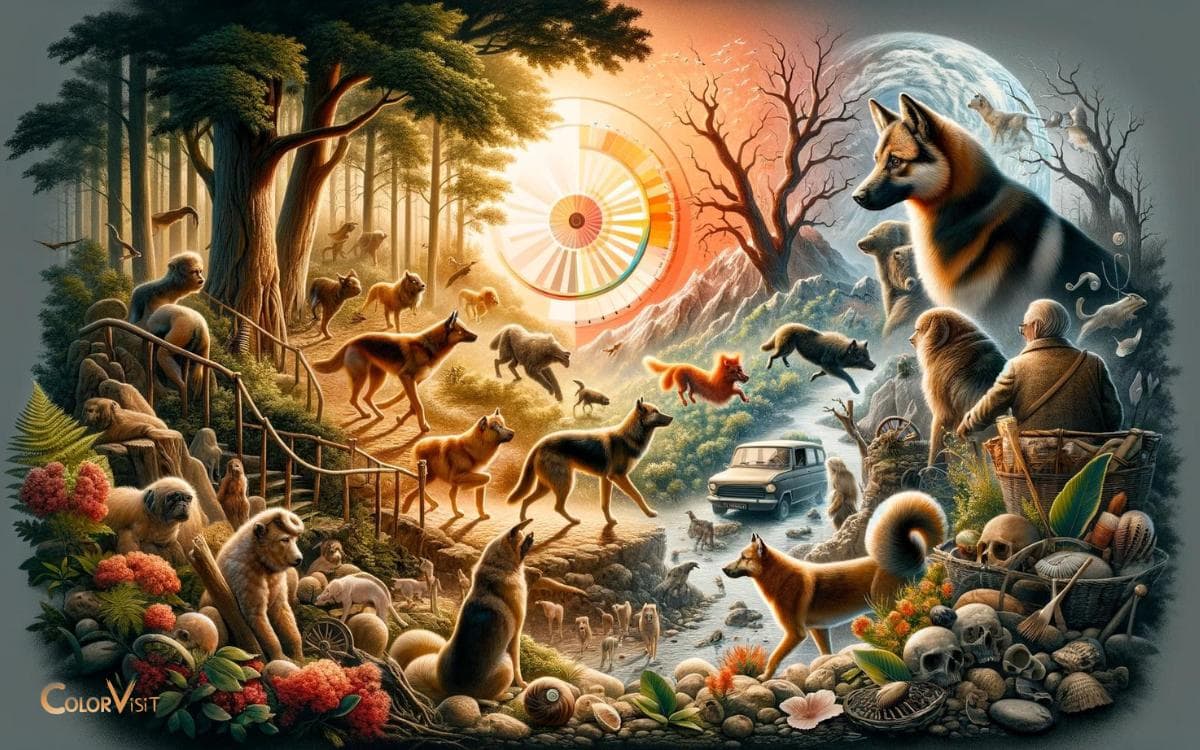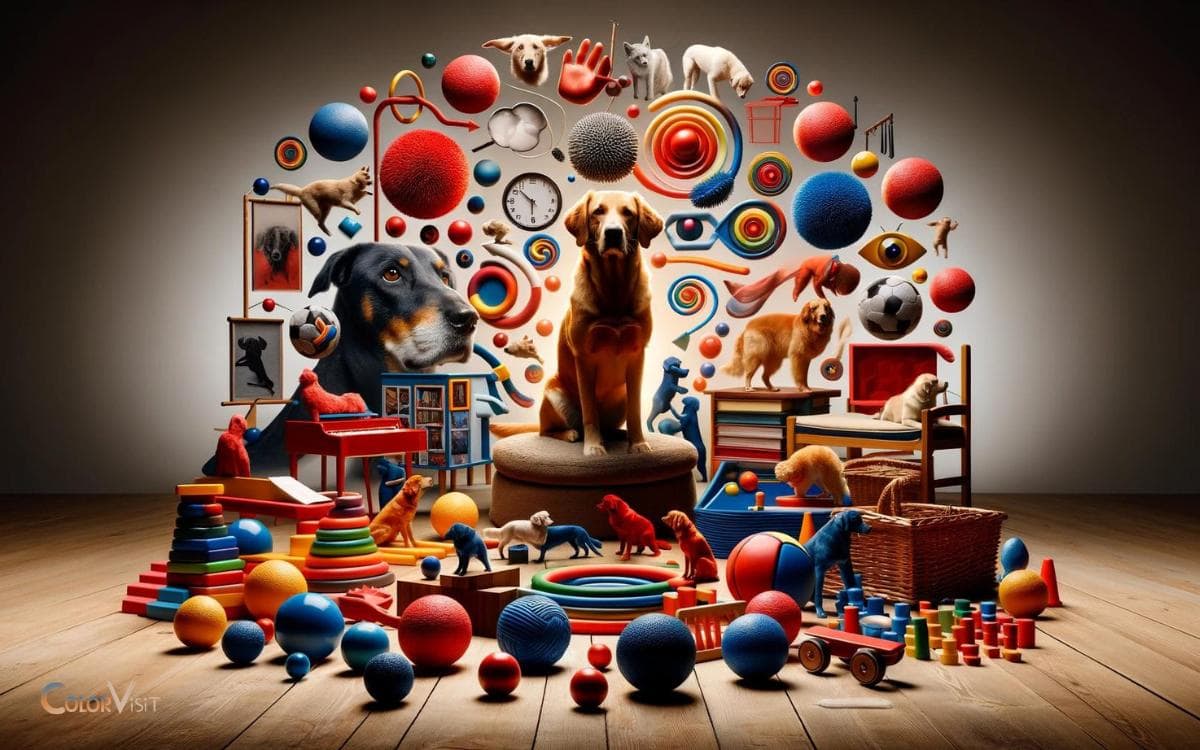Do Dogs Hate the Color Red? No!
No, dogs do not hate the color red. However, they may not perceive it as humans do. The color spectrum visible to dogs is different from that of humans, making them partially colorblind.
Dogs see the world in a dichromatic color palette, meaning they only have two types of color receptors in their eyes, unlike humans who have three.
This limits their ability to see certain colors, including red. For dogs, the color red appears as a shade of dark brown or even black. Therefore, the idea that dogs hate the color red is a misconception.
For instance, if you throw a red ball in green grass, your dog might struggle to find it because both colors might appear quite similar to them.
In essence, dogs don’t hate red; they simply can’t distinguish it. Therefore, their interaction with the color red is based on a different visual perception, not on aversion.
Key Takeaway
Can Dogs See the Color Red?
Dogs’ ability to see the color red is a topic of interest among researchers and dog owners alike.
- While dogs are not able to perceive the full range of colors that humans can, they are not colorblind in the true sense.
- Research suggests that dogs have dichromatic vision, meaning they can see a spectrum of colors, but it is limited compared to the trichromatic vision of humans.
- Dogs’ color perception is similar to red-green color blindness in humans, where they have difficulty differentiating between red and green.
- However, recent studies have indicated that dogs may have some ability to perceive the color red, though it appears as a shade of yellow or brown to them.
Understanding how dogs perceive color is crucial for designing products and environments that cater to their visual needs.
The Influence of Color on Dog Behavior
Research indicates that the influence of color on dog behavior is a topic of growing interest among scientists and pet product designers.
- Colors can affect a dog’s mood, behavior, and even physiological state.
- For instance, studies have shown that dogs may prefer certain colors over others, with some colors eliciting calmness and relaxation while others may evoke excitement or even anxiety.
- Understanding how dogs perceive and react to different colors is crucial for designing products, such as toys, bedding, and accessories, that can positively influence their well-being.
- Moreover, color plays a significant role in training and behavioral therapy for dogs. By incorporating the right colors into their environment, handlers can potentially improve focus, reduce stress, and enhance overall behavior.
As research in this area progresses, it promises innovative advancements in the way we understand and cater to the needs of our canine companions.
Red Objects and Canine Reactions
The presence of red objects in a dog’s environment can elicit specific behavioral and physiological reactions. Research suggests that dogs may react differently to the color red compared to other colors.
Here are three ways in which red objects may impact canine reactions:
- Increased Attention: Studies have shown that dogs may exhibit heightened attention towards red objects, possibly due to the color’s high visibility and ability to stand out in their visual perception.
- Elevated Excitement: Red has been associated with increased arousal and excitement in dogs. The presence of red objects may lead to heightened excitement levels, influencing their behavior and energy.
- Potential Agitation: Some dogs may display signs of agitation or aggression towards red objects, although individual responses can vary.
Understanding how red objects can influence canine reactions opens up opportunities for innovative training methods and environmental enrichment strategies.
The Evolution of Canine Color Perception
Canine color perception has gradually evolved, allowing dogs to differentiate colors with varying levels of accuracy and specificity.
- While humans have three types of color receptors (cones) in their eyes, dogs have only two, making their color vision dichromatic.
- This means that dogs primarily perceive the world in shades of blue and yellow, with limited ability to distinguish between red and green.
- The evolutionary reason for this lies in dogs’ historical role as hunters, where the ability to detect motion and contrast was more crucial than identifying specific colors.
- Despite this limitation, dogs have adapted to excel in low-light conditions, possessing a higher number of light-sensitive rod cells in their retinas.
Understanding the evolutionary trajectory of canine color perception offers valuable insights into their sensory experiences and enhances our ability to design effective training and communication strategies.
Understanding Canine Color Preferences
Evolutionary adaptations in canine color perception have led to specific color preferences, shaping how dogs interact with their environment and perceive the world around them.
Understanding these preferences can offer valuable insights for various industries, including pet product design and animal behavior research.
- Color Discrimination: Dogs have dichromatic vision, making them less sensitive to red and green wavelengths. They perceive the world in shades of blue and yellow, influencing their color preferences.
- Preference for Blue and Yellow: Due to their visual acuity for these colors, dogs are often attracted to toys and objects with blue or yellow hues. This preference can be leveraged in the design of dog products and accessories.
- Impact on Training and Enrichment: Recognizing canine color preferences can enhance training methods and environmental enrichment strategies, promoting improved well-being and engagement for dogs.
Conclusion
The color red does not necessarily evoke hatred in dogs. While dogs can see the color red, their reactions to it are more likely influenced by their individual experiences and associations.
For example, a study found that dogs trained to associate the color red with positive experiences, such as receiving treats, showed no aversion to the color.
This suggests that canine reactions to red may be shaped by learned associations rather than an inherent dislike for the color.


